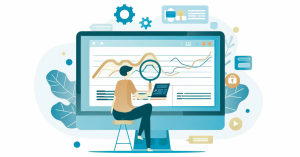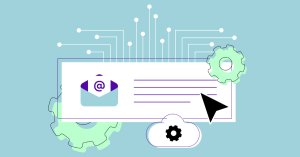By Ryan Phelan | Managing Director at RPE Origin
Everywhere I go, I run into someone talking about personalization as if it were some new discovery or the next big trend. We have been talking about the need to personalize for 20 years. Why do people think it’s new?
True personalization is complex. The challenge I see is that we have oversimplified the gateway to success for email marketers. Why should we care? That part is easy.
We need to care because the rest of the digital marketing world is personalizing at scale. But email is not. That makes email pretty stupid. We need to figure out how to also approach personalization at scale, but first we need to understand what “personalization at scale” really means.
Two Kinds of Personalization
There’s the “insert first name here” kind, in which you drop in some key data points like name, location or weather. This fill-in-the-blank personalization is the easy part.
It can have a short-term effect. Personalization’s power is only minimally realized in that approach. Why? Because it doesn’t establish a long-term connection with the customer.
If the only relevant data I see in an email from a sender is my first name, I’ll notice it once or twice, and then after that, I’ll gloss over it.
The true expression of personalization at scale is using customer data to craft the whole message. Each customer is different, so that means every message you send will be different.
It’s joining one data part to other pieces of data to infer preference, propensity, choices, behavior and other variables. That’s the heavy lifting of personalization: the sophisticated use of data to produce message personalization at a 1:1 scale.
Achieving True Relevance
Back in 2001 – the dawn of email personalization – I would go to conferences and hear speakers declare relevance was the way to go, with relevance defined as a highly personal message based upon data.
We have struggled since then to actualize that concept. How do we get there? What are the key pieces we need to achieve personalization at scale that does more than fill in the blanks?
Here are three ways to make that happen:
- Personalization starts with the data.
Before you can make any strategic or tactical decisions, know what kinds of data are available to you. Look at what you own – that zero-party or first-party data that customers give you or that you collect from their behavior. That includes data you have that’s influenced by third-party data collected with permission from your customers, which you have acquired legally.
You’ll have to do an in-depth inventory of your data. Have you reached out to your CRM (customer relationship management) or CDP (customer data platform) teams to ask for a data dictionary or the header row of your database so you can see what you have? Do you know if your company buys data to augment your records? What does that contract look like?
Having this inventory shows you what’s possible. It helps you join a strategy to the things that can actualize it. Get close to the data, instead of being resigned to working with an irrelevant construct that another team controls.
Having thorough understanding of your data will help inform your strategies to use it. And why does it come before strategy? Because this process takes time. If you stop and inventory your data in the middle of a project, you’ll slow down your progress. This is an investment across everything you’re doing. Every idea you have starts with the data, so take the time needed first.
- Understand the difference between strategy and tactics.
They’re not the same, and I’ve spent years helping marketers understand the differences and why one must come before the other. Strategy is the “why,” and tactics are the “how.” You have to know why before you can figure out how.
Strategy answers questions like “Why does my customer care?” and “What’s the benefit for them?” In answering these questions, make sure you are being honest and haven’t fallen into the trap of rationalizing everything (because we’re marketers and we can rationalize just about anything).
Strategy-planning begins by answering these key questions. But most of us marketers are focused on the tactics. Give us a problem and we’ll come up with the solutions. But these are tactical solutions. Pull this list, send that campaign, tweak this automation, blah blah blah.
But the challenge for marketers, and we saw this in 2020 and 2021, is that the strategies are as important as the tactics.
Before you start your next project, be sure you can answer questions like “What’s the benefit?,” “Why should they care?,” and “What’s their reason to believe?”
From those answers you’ll derive your tactics. That’s the safe place for most marketers. If you’ve already done your data discovery, this tactical planning will be easier because you’ll know what data you have to work with and how to plan your next moves.
- Look to marketing automation to test your efficacy for personalization at scale.
Automated and transactional emails can drive north of 50% of email revenue because they’re highly targeted and relevant. They use data to populate and manipulate the message.
If you’re looking for the proof point of personalization benefits, just look at your transactional email series and your automations (If you have none, you’re doing it wrong).
Marketing automation is a decision matrix that specifies when, where, and to whom to launch messages. It challenges you to think strategically, to think through all the possible scenarios. What information will you include? What will you exclude? What are the rules behind these decisions?
That’s how you demonstrate the efficacy of personalization and your ability to think critically, to define your strategic and tactical goals.
Personalization in Action: Post-Purchase Emails
When I worked in email for a major retailer, we developed a post-purchase automation that helped us close the loop on a major appliance purchase sequence. This is one of the best illustrations of personalization at scale that I know.
Our customer data told us that people who bought front-loading washers and dryers from us but didn’t buy matching pedestals to raise them up to a comfortable working height would likely buy them within three weeks. That’s how long it would take before they got sick of bending over to load and unload their laundry.
We wanted to make sure they bought those pedestals from us. So, we developed a marketing automation that sent an email suggesting the purchase seven days after delivering the appliances to customers who had not bought the pedestals at the same time.
The results were amazing. The conversion numbers were off the scale because the email fulfilled the scenario we developed using our data.
Why not send that email right after purchase? Because we wanted our customers to experience the pain of not having the pedestal to raise the washer and dryer to a comfortable height. That makes our follow-up email a more powerful message.
That’s the strategic answer. We knew why they would care and how they would see the benefit. The tactical execution is the automation itself.
Your marketing automation program is the key to personalization at scale. Manipulating your message for each recipient using your data makes it highly personalized.
Wrapping Up: Start Small and Build On Success
The next time you read about personalization, judge for yourself how advanced the discussion is. Does it stop with putting a personal name in the subject line? If you’re a smart email marketer, you know how to do that already. It’s built into every email platform.
Look instead for conversation about advanced personalization. What’s the next advancement after you personalize the subject line? How does the discussion help you develop your own personalization program?
As marketers, we need that starting point. It gives us a gateway to see how powerful our data can become and how personalization at scale is relevant to what we do.
It’s okay to start small and to fail. By working on small-scale projects now, you can prove the value later on a large scale. If you do no personalization now, just begin with one thing, like adding a person’s first name to the subject line. If you need help getting started, take a look at things you can do at the stages of your personalization journey:
Then move on to adding conditional content. It’s all part of the road to personalization at scale, to using data to manipulate messages in a complex way.
Success comes when you start small, make mistakes and learn from them. When you start small, you can build on your innovation week after week. That’s incremental innovation.
Success doesn’t come from a great leap forward. It’s about taking the incremental steps that prove to yourself and those around you that personalization really does work.



